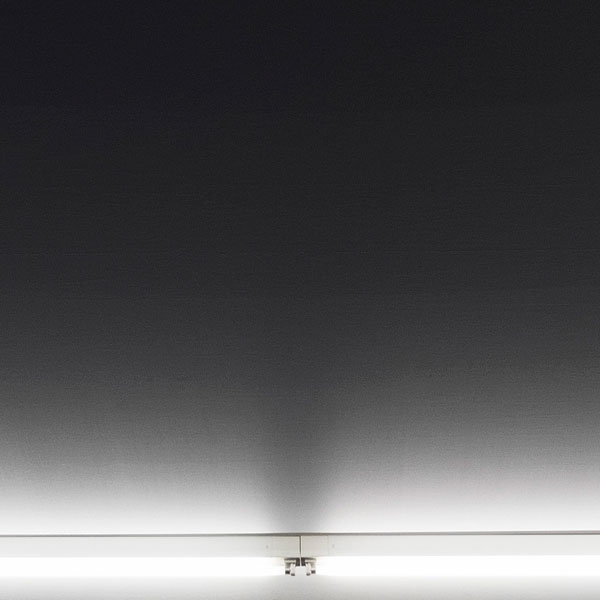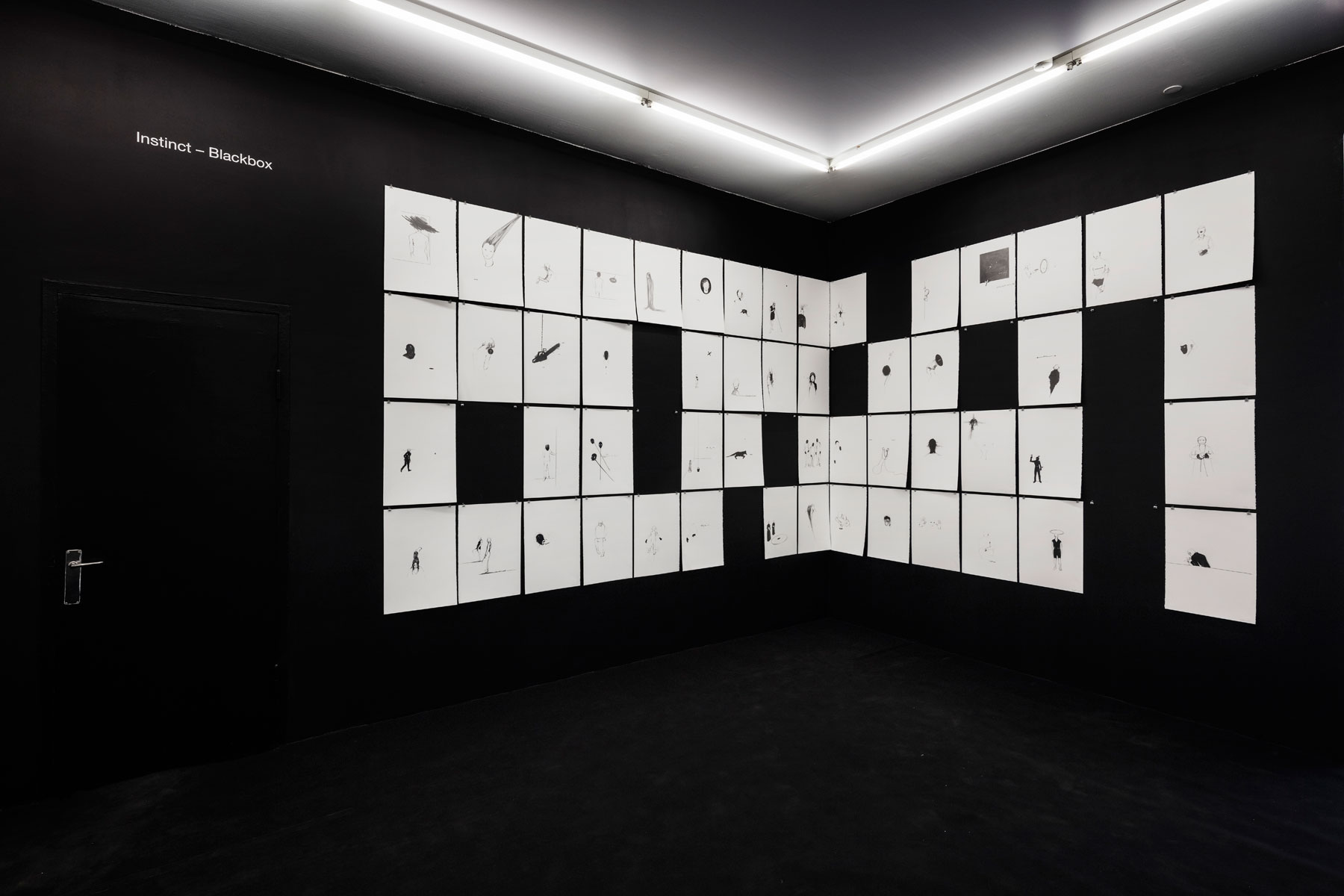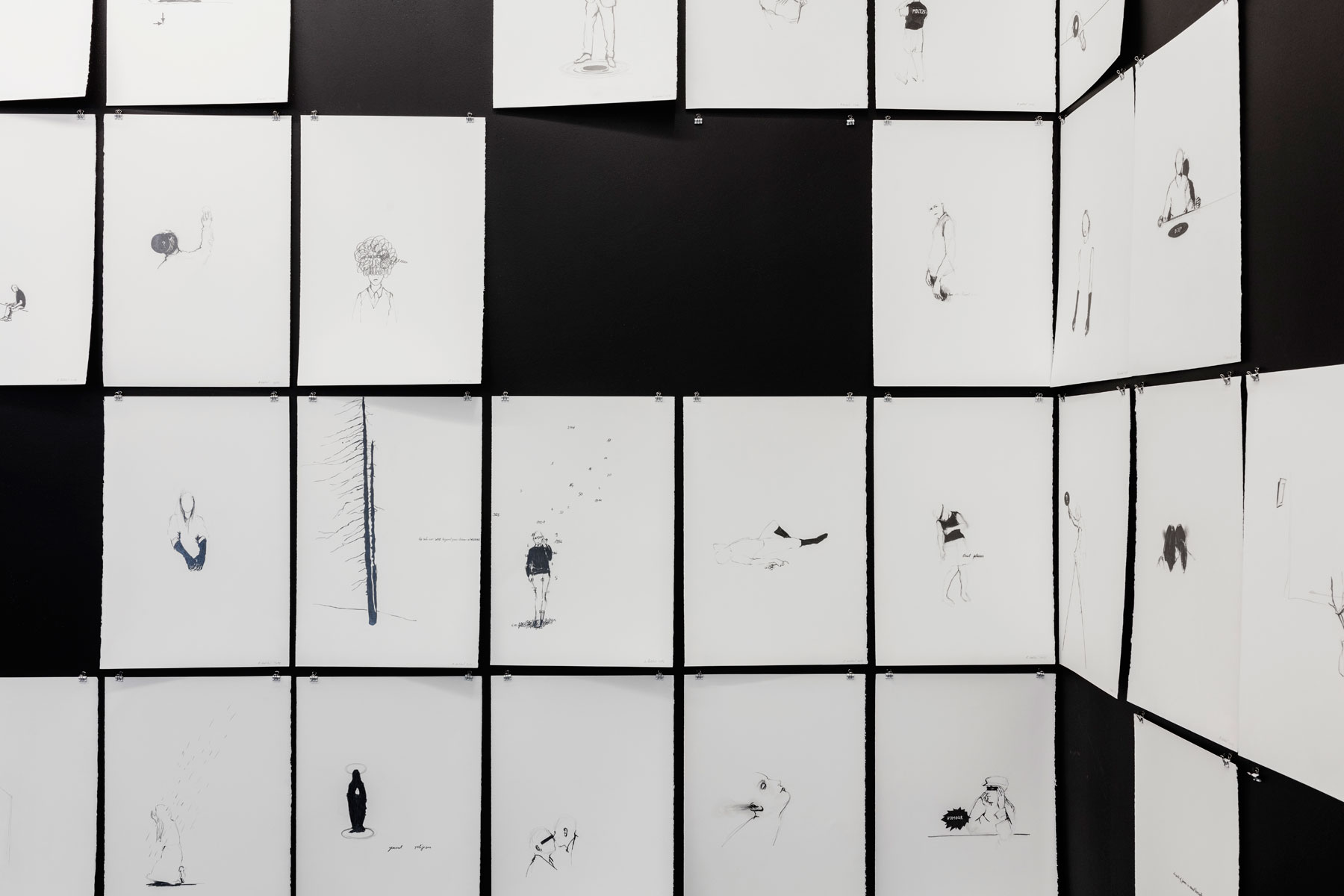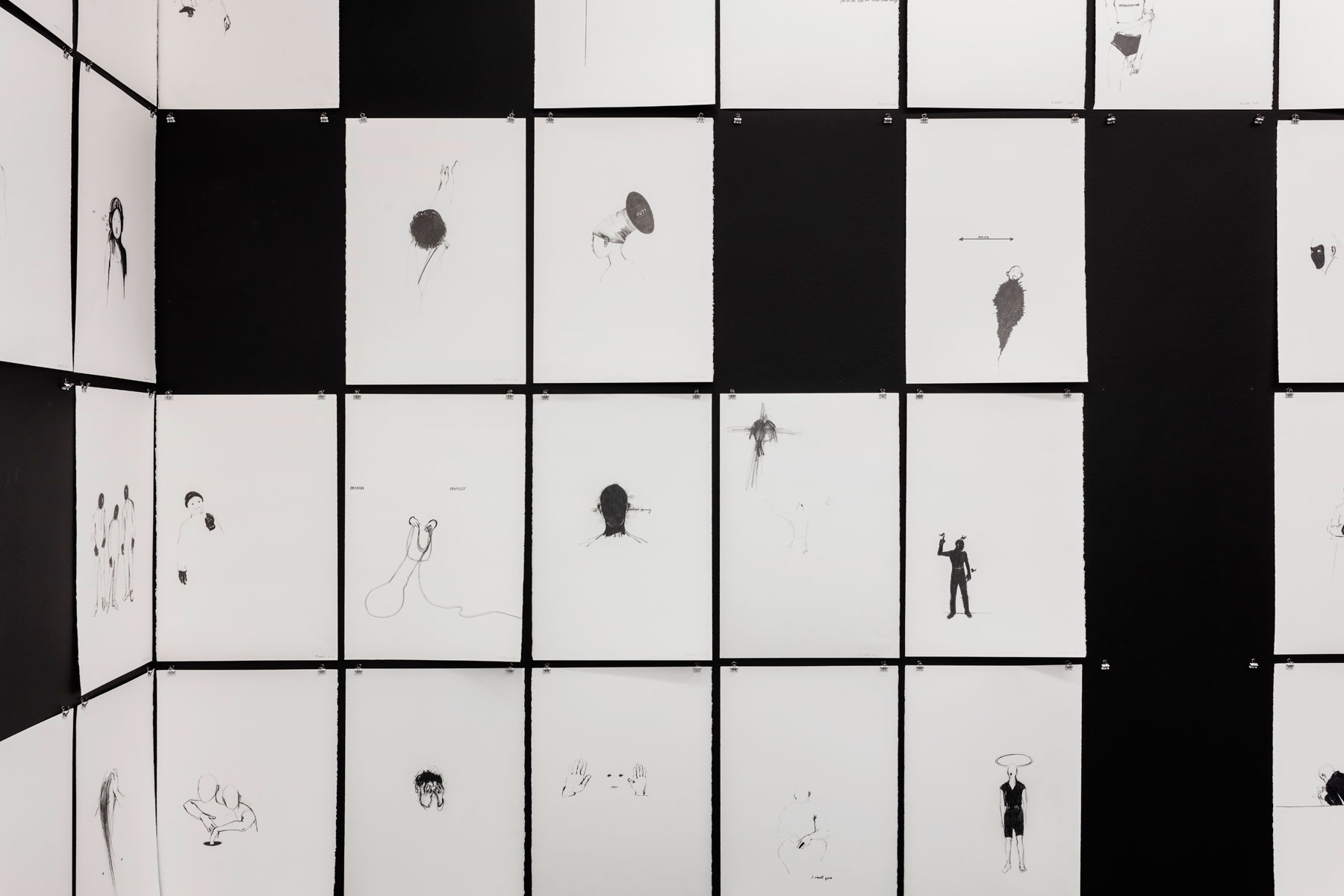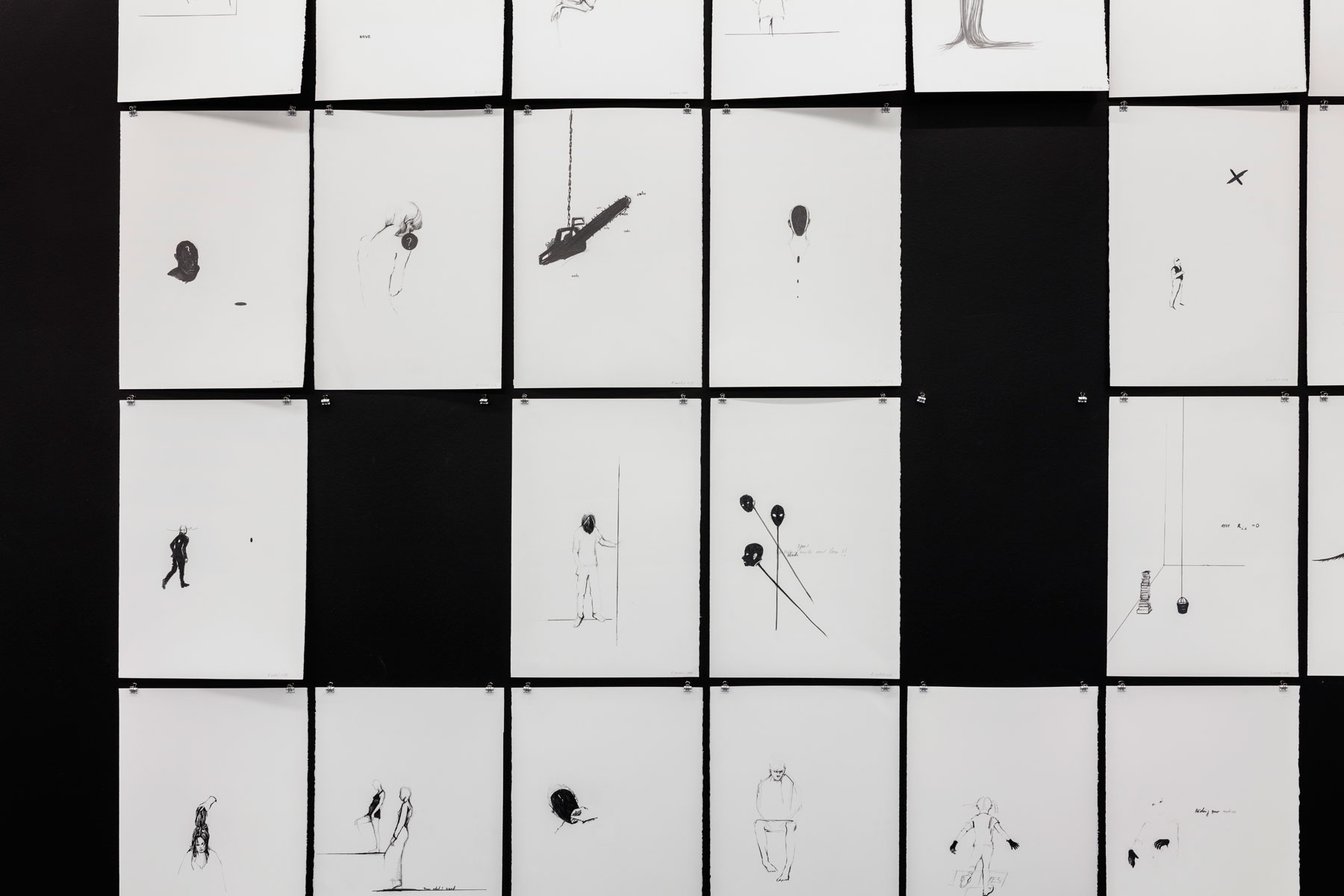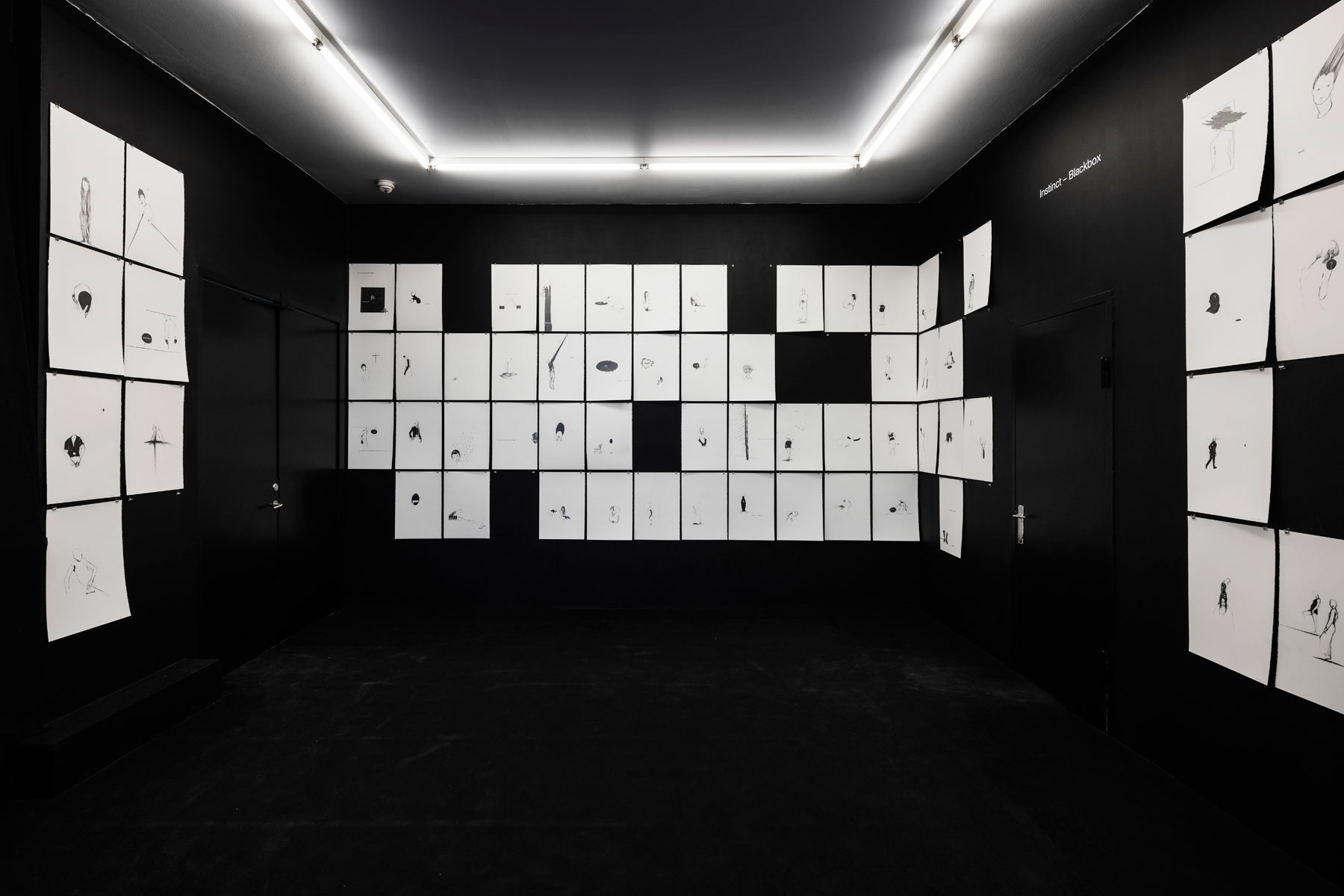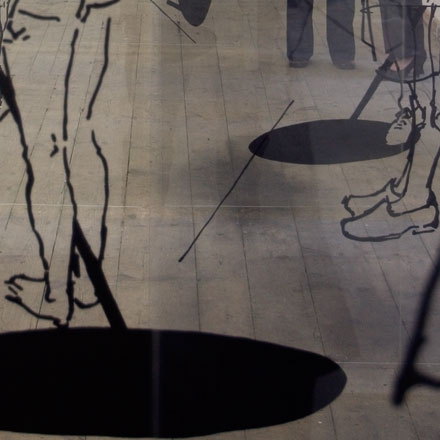Roland Nachtigäller
Instinct – Black Box
Brigitte Waldach addresses the inherent tension in the dynamics of human behavior and emotion in her spatial drawing “Instinct – Black Box,” which she stages as a visual “allover” that extends into concrete interactions between the gallery and visitors in the social space. 130 drawings are hung on the walls in a tight four-row grid, reaching from just above the black carpet floor to the ceiling of the small space, painted entirely in black.
Now the visitor stands alone in an acoustically damped atmosphere, confronting a single counterpart in the form of the drawing artist – here, the words have receded almost completely, relinquishing the space to the images. On display are dreamlike miniatures: people with elongated limbs or unusual body extensions, faceless portraits, emotions rendered as schematic line drawings, gesture fragments, and brilliantly poignant scenes that tread the line between absurdity, slapstick, and oppression. Again and again, the inner tension of these drawings emerges from the contrast between fine, quick, and almost timid lines, and solid dark surfaces that sharply contour individual body parts, without articulating spatial depth. Waldach offers us a kind of visual diary here, journaling a newly regained desire for free drawing, and for the immediacy of pictorial expression, which seeks to liberate the bond between hand and eye from intellectual control. Aphoristic scenes align themselves with temporary neighbors, establishing rhythms, assuming narrative threads, and losing them again in the ambiguity of spontaneous thought.
Physically as well, there is more in flux than initially meets the eye. Over the course of the exhibition period, the few black spaces on the four otherwise completely covered walls gradually multiply: the drawings can be purchased and taken home the same day. The exuberant visual cosmos thus shrinks ever more; the tight presentation and its internal references become increasingly porous. It finds an equivalent in the graphite sketches themselves: Waldach’s drawings likewise entail empty spaces, blind spots, and missing elements, which both obscure the characters and situations and invite them for inspection by the viewer. The absence of differentiated representation is not synonymous with deficit. Perhaps at some point a visitor, alone in the room with the last remaining drawing, might see much more than the guests at the exhibition opening. If the visitor purchases the last drawing, what remains is the void of the black box – an echo chamber for all that was previously seen.
Roland Nachtigäller


